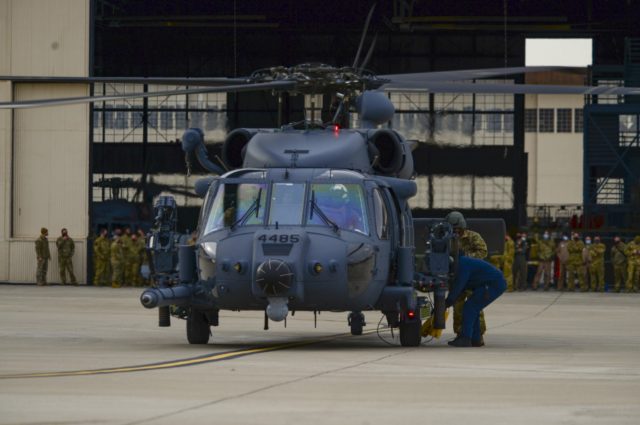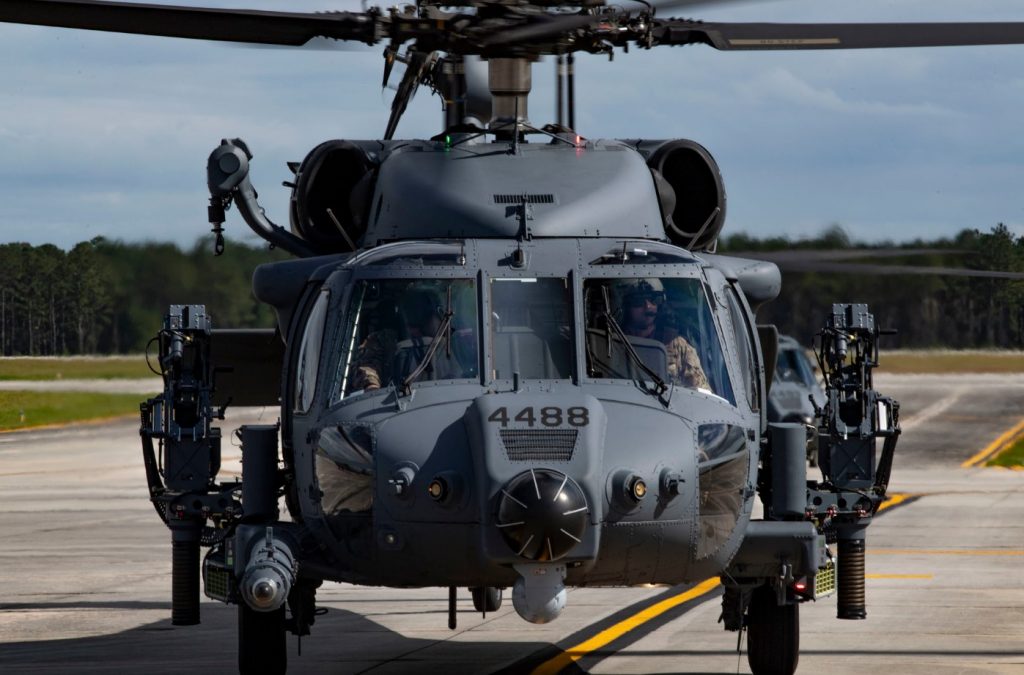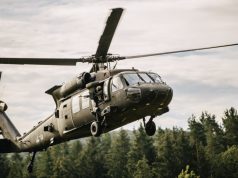
The US Air Force intends to pay Sikorsky up to $981 million for upgrades to the new HH-60W Jolly Green II combat rescue helicopters it is currently fielding.
The service is planning the capabilities upgrades program despite having received its first two HH-60Ws four months ago.
In a redacted justification and approval document, the air force said the helicopter, as it is now delivered, reflects a 2012 requirements baseline which was defined and frozen prior to the 2014 contract award for the engineering and manufacturing development (EMD) phase.
During the last five years of EMD, the original combat rescue helicopter requirements baseline has evolved as a result of changes in threat conditions and evolving mission requirements. The planned investment in the upgrades is in response to this operational need, the service explained.
While the document reveals few details on the planned upgrades, it does state that the first capability modification “must start in fiscal year 21.”
As stated, the upgrades will encompass, but will not be limited to, avionics (both hardware and software), structures, mandates, deficiency reports, diminishing manufacturing sources, and training systems.
The upgrades could be expected to address some of the helicopter’s deficiencies identified by the Pentagon’s top tester, Director, Operational Test & Evaluation (DOT&E), in the 2020 report to congress.
The Air Force Operational Test and Evaluation Center (AFOTEC) identified poor hover symbology in degraded visual environments as a risk to IOT&E, while developmental tests of the external gun system identified deficiencies that increase workload and risk to crew members in some reloading scenarios. Additionally, gun mount binding problems could limit weapon effectiveness and safety.
The helicopter’s radar warning receiver demonstrated progress toward mission capability, however, the system’s threat definition files are still developmental and not tailored to anticipated operational threats, resulting in excessive spurious detections. Additionally, the display of threat information (including infrared, laser, and small arms threats as well as RWR data) overlayed on the primary flight display for excessively long periods, obscuring navigation information.
What is more, the armor did not demonstrate equivalent multi-hit performance to the currently fielded HH-60G armor.
It remains to be seen whether the planned capabilities upgrades program would address some of the issues.

Based on the UH-60M Black Hawk and customized for the US Air Force’s rescue mission, the HH-60W helicopter will be replacing the HH-60G Pave Hawk model, which has been flown for more than 26 years.
The HH-60W features advanced and improved defensive systems, vulnerability reduction, hover performance, electrical capacity, avionics, cooling, weapons, cyber-security, environmental and net-centric requirements.
The US Air Force plans to buy 108 helicopters to replace the Pave Hawks, which perform critical combat search and rescue and personnel recovery operations for all US military services.


























